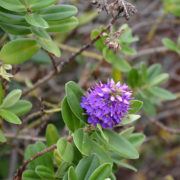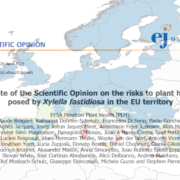Hebe spp., a new host plant of Xylella fastidiosa subsp. pauca ST53 in Apulia
A new plant species, the thirty-first in a row, since the discovery of the outbreak in Apulia, has been identified as a host of Xylella fastidiosa subsp. pauca ST53, within the framework of POnTE activities dedicated to studying the pathogenicity and biology of the pathogen.
As confirmed by an official note published on March 6, 2018 on the official website of the Regional Phytosanitary Service dedicated to the Xylella fastidiosa outbreak in Apulia, a plant of Hebe spp., a genus in the family of Scrophulariaceae, showing symptoms of yellowing, leaf scorch and twig dieback, was found positive to serological and molecular analysis in the laboratories of CNR-IPSP and the University of Bari.
When subjected to MLST analysis the bacterial DNA isolated from the diseased plant was identified as Sequence Type 53, the unique ST detected so far in all the hosts found infected by Xylella fastidiosa in Salento.
The genus Hebe, already identified in other countries as a host of Xylella fastidiosa subspecies multiplex, includes about 90 ornamental species, native to New Zealand, and commonly grown in many gardens and public areas, as they are appreciated for decorative foliage and a peculiar flowering.
Photo gallery courtesy of Pierfederico La Notte (CNR-IPSP, Bari)









